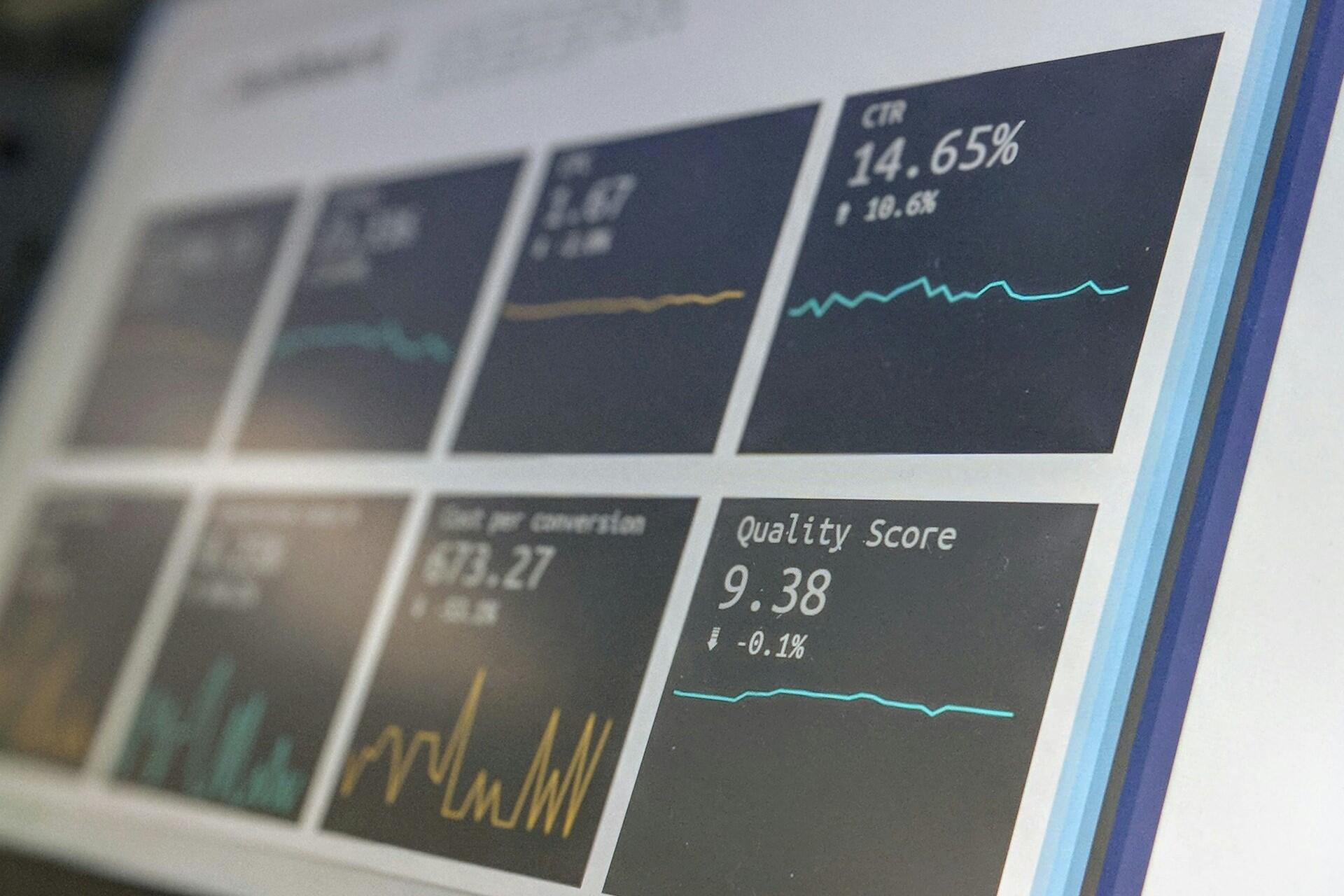Statistics is the grammar of science.”
Karl Pearson, Mathematician
So, how hard is business statistics? It can be difficult, especially for those who aren't confident in math or statistical reasoning. The subject combines numbers, probability, and logical analysis, applying these concepts to real-world business situations. This combination can make it trickier than business classes and even statistics courses for some students. Here, we'll look at what makes it so challenging and what you can do about it.

What Makes Business Statistics Hard?
It's often seen as a challenging subject, but business statistics is also an important subject. The idea of working with data can sound straightforward, but translating raw data into meaningful insights is where most students find things to be more difficult. It's not impossible, though.
Business statistics combines mathematics, probability, and logical reasoning to form conclusions about business and markets. Students need strong technical skills, for one, and the subject can be overwhelming if you don't have them. This is why many ask if business statistics is a hard subject.

Mathematical Foundations Required
The mathematical component of business statistics can pose a challenge to students. Students must apply concepts from algebra, calculus, and probability, often using real-world datasets. If you already struggle with math, business statistics will likely feel intimidating. Questions like calculating regression models, analyzing covariance, or using statistical distributions require fluency with numbers. If they were all new terms to you, you're probably beginning to see what we mean. Students often find business statistics challenging, but it's also worth remembering that any subject introduces new concepts to students as they progress through their education.
Modern courses often integrate tools and software that can make the math more approachable. However, this adds another hurdle that you must overcome: familiarizing yourself with the tools and software. Programs like Excel, SPSS, R, or Python can perform advanced calculations in seconds. However, you still need to understand the logic behind the outputs. You can generate a regression model using software. Still, if you don't know how to interpret the coefficients or identify statistical errors, you won't get meaningful results.
Complex Statistical Concepts
Beyond the mathematics in business statistics itself, the subject also introduces a whole bunch of new terminology and analytical methods. Things like hypothesis testing, parameter estimation, and multivariable models are all abstract concepts that require precision. A single error can lead to heavily flawed conclusions, which students find particularly frustrating during coursework. There's a steep learning curve, and the online chat tends to focus on how challenging business statistics can be for students, even those with a solid background in statistics.
There are several common mistakes students make when applying statistical models as well. Confusing correlation with causation is a frequent problem (and not just in business statistics). Similarly, working with samples that are too small to provide accurate insights is something students should be aware of. These can all be frustrating, especially for beginners, since they won't even know where they went wrong until much later in the analysis.

Application to Real-World Scenarios
One of the most underestimated challenges in business statistics is applying statistics to real business problems. Pure math doesn't work like business statistics, where students have to interpret the numbers in the context of marketing campaigns, financial performance, or risk assessment. This means you need to be analytically rigorous and apply critical thinking, both skills that cannot be developed overnight.
Imagine trying to understand whether a dip in sales is statistically significant. This will require computation, but you'll also need a contextual awareness of markets and consumer behavior. Connecting formulas to real-world business trends can be complex, and it adds yet another layer of complexity to business statistics.
- Heavy reliance on math. Business statistics requires algebra, calculus, and probability skills.
- Abstract statistical concepts. Students have to cover regression, covariance, and hypothesis testing.
- Real-world application. The numbers in business statistics also have to be tied to business trends and decisions.
If you’re struggling, start by strengthening your math foundations before diving into advanced statistical methods.
Despite these difficulties, business statistics offer considerable value in the job market. Employers across industries, from finance and marketing to healthcare and tech, value graduates who know how to make decisions based on data. Knowing how to analyze sales figures, spot consumer trends, or predict market risks will make you a valuable employee one day. So while business statistics may feel more complex than other business classes, the difficulty will undoubtedly be worth it.
| Fields | Annual Income |
|---|---|
| Economist | $105,500 |
| Statistician | $95,000 |
| Financial Analyst | $81,000 |
| Data Scientist | $101,578 |
| Business Analyst | $98,512 |
Is Business Statistics Harder Than Regular Statistics?
So, how does business statistics compare to regular statistics? There's some nuance to the answer to consider here. You need to consider the context in which each subject is studied and an individual student's skillset. Both subjects require strong mathematical foundations, but business statistics adds the layers of interpretation and application that make it distinct. In contrast, statistics may delve more into the math.
Contextual Differences
Regular statistics tends to deal with broad data sets and generalized methods. Students focus on probability distribution, descriptive and inferential statistics, and hypothesis testing in the abstract sense. Business statistics utilizes these tools for financial reports, marketing campaigns, risk assessments, and operational decisions. This narrower concept makes it more demanding, as students must run calculations while also explaining what they mean in terms of a company's strategy.
Skill Set Variations
A regular statistics class focuses more deeply on mathematical ability and logical reasoning. Business statistics demands those skills, too, but you then have to add business acumen, critical thinking, and communication skills on top. A student may need to explain regression results to a non-technical manager or demonstrate how statistical evidence supports a business decision. This is where students may feel business statistics is more complex than regular statistics.
You should also know that difficulty is always relative. Since every student is different, you can never guarantee that you'll find all of this difficult. There may be something else that pops up that everybody else in class grasps immediately, but you struggle with.
| Aspect | Business Statistics | Regular Statistics |
|---|---|---|
| Focus | Applies statistical methods to business problems | General statistical theory and methods |
| Applications | Financial analysis, marketing, risk management, operations | Scientific research, social sciences, general data analysis |
| Skills Needed | Math, probability, critical thinking, business context, communication | Math, probability, logical reasoning |
| Difficulty Perception | Considered harder due to real-world application demands | Seen as abstract but more straightforward for math-focused students |
| Common Settings | Business schools, MBA programs, management courses | Math departments, science courses, introductory stats classes |
Strategies to Succeed in Business Statistics
Is business stats hard? The truth is that students can make the subject more manageable by employing effective study strategies. This begins with a strong foundation in math, utilizing the right resources, and seeking expert guidance. By doing this, this otherwise difficult class could become one of the most rewarding in their business degree.
Strengthening Mathematical Skills
A strong math foundation is a non-negotiable for business statistics. A lot of the difficulty originates in the mathematical concepts used, such as regression, probability, and advanced algebra. These are all areas that students should refresh or study before taking a business statistics class. Even dedicating 15 to 20 minutes per day to reviewing calculus or practicing problems can make complex business statistics concepts more approachable and also boost your confidence, as you won't feel that these have been sprung on you in class.

- Algebra and functions (needed for interpreting formulas).
- Probability rules (essential for risk mitigation and forecasting).
- Basic calculus (particularly for trend analysis and optimization problems).
Utilizing Resources and Support
You don't have to face business statistics alone. You can access numerous resources to simplify even the most complex concepts. Turn to college libraries and online platforms for free statistics tutorials, practice exercises, and data analysis tools, such as statistical calculators.
Study groups are another great way to advance. Working through problem sets with your peers is a great way to see different approaches to the same questions. You'll find complex methods become easier to understand, mainly when they're explained by somebody with a similar level to yours. You can also see the same benefits by exploring online forums and communities, such as university boards or Reddit threads. You'll find a lot of your questions have already been asked about business statistics by other students.
Consistently utilize a diverse range of resources. Utilize practice quizzes, consult with professors, and explore online and real-world communities. Don't focus solely on memorizing formulas; instead, look to understanding the concepts behind them.

Hire a Superprof Tutor
Many students find that hiring a private tutor can help them overcome the difficulties in business statistics and their other classes. A one-on-one tutor will break down complex problems, explain concepts in terms that you understand, and design exercises tailored to your strengths and weaknesses.
You can find in-person and online tutors on Superprof for business statistics and almost any other class or skill you can think of. With many offering the first session for free, you can even try a few before choosing the one that's right for you. Start your search today!















